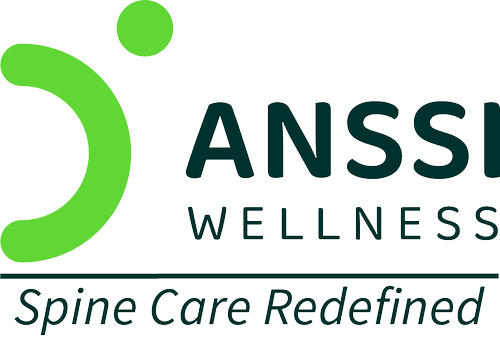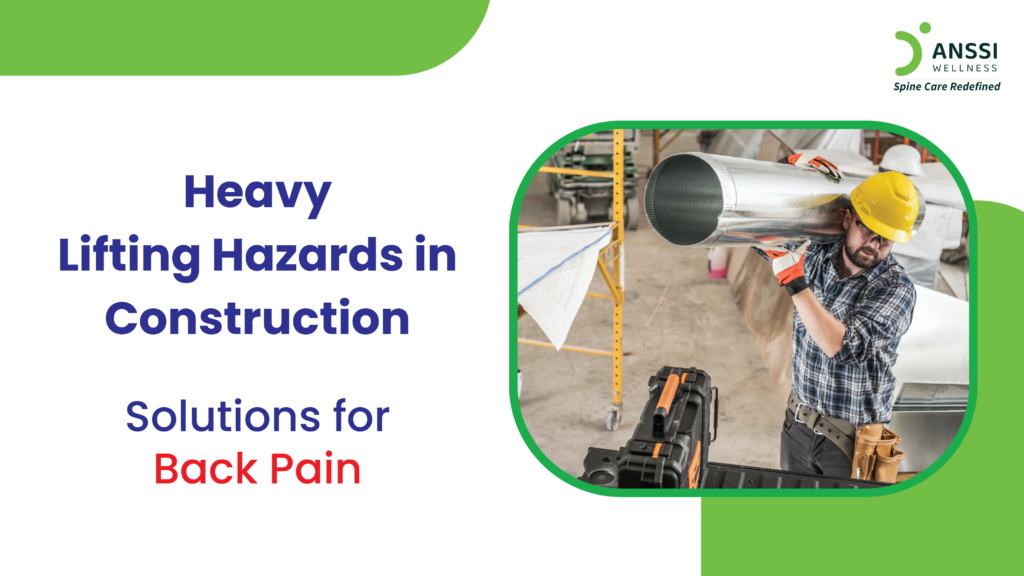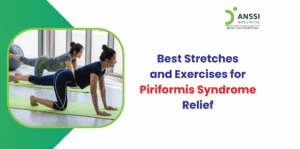Construction workers perform physically demanding tasks daily, with heavy lifting being one of the most common activities on site. However, improper lifting techniques and excessive strain on the back can lead to serious injuries, affecting workers’ health and productivity. Back injuries are a leading cause of health issues in construction workers, often resulting in chronic pain, mobility issues, and long-term disability.
Understanding the risks and adopting preventive measures is crucial to ensure workplace safety and long-term well-being.
Common Back Injuries at Construction Sites
Back injuries are a frequent concern for construction workers, as lifting heavy materials repeatedly can put excessive pressure on the spine.
Some of the most common injuries include:
Herniated Discs
Repetitive heavy lifting or sudden strain can cause the soft inner material of spinal discs to bulge or rupture, leading to severe pain, numbness, and weakness.
Muscle Strains and Sprains
Overstretching or tearing of muscles and ligaments due to improper lifting techniques can result in intense pain and reduced mobility.
Spinal Misalignment
Incorrect posture while lifting or carrying loads can cause the spine to shift out of alignment, leading to chronic discomfort and reduced flexibility.
Chronic Lower Back Pain
Continuous strain on the lower back, combined with poor ergonomics, can lead to persistent pain that worsens over time.
Nerve Damage
Severe back injuries may put pressure on nerves, causing tingling sensations, weakness, or pain radiating down the legs (sciatica).
Left untreated, these injuries can lead to long-term health complications, limiting a person’s ability to perform daily tasks efficiently.
Causes of Back Injuries
Several factors contribute to back injuries in construction work. Understanding these causes can help prevent serious damage:
- Poor Lifting Techniques: Bending at the waist instead of the knees, twisting while lifting, or jerking movements can strain the spine.
- Repetitive Movements: Constant lifting and carrying of heavy objects without proper rest can lead to overuse injuries.
- Inadequate Support: Not using lifting equipment, back support belts, or assistance from coworkers can increase injury risks.
- Lack of Safety Training: Workers who are not trained in proper lifting methods may unknowingly put themselves at risk.
- Uneven or Slippery Surfaces: Poor workplace conditions can cause sudden slips or falls, leading to spinal injuries.
Protecting Your Back: Do’s and Don’ts
Taking the right precautions can significantly reduce the chances of back injuries. Here are some essential safety tips:
Do’s:
- Use Proper Lifting Techniques: Always bend at the knees, keep your back straight, and lift with your legs, not your back.
- Maintain a Neutral Spine: Avoid excessive bending or twisting while carrying heavy loads.
- Use Supportive Gear: Wear a back support belt or use lifting straps to reduce strain on the spine.
- Use Lifting Equipment: When available, use forklifts, cranes, or hoists to minimise manual lifting.
- Take Breaks: Give your body time to recover by resting between heavy lifting tasks.
Don’ts:
- Avoid Lifting Beyond Your Capacity: If an object is too heavy, ask for help or use mechanical assistance.
- Don’t Twist While Lifting: Turning your upper body while carrying weight can increase the risk of disc injuries.
- Avoid Rushing: Lifting too quickly without proper form can strain muscles and ligaments.
- Don’t Ignore Pain: If you feel discomfort while lifting, stop immediately and assess your condition.
By following these safety measures, a construction worker can significantly lower the risk of developing back problems.
Importance of Reporting Injuries
Ignoring a back injury can lead to severe complications. Promptly reporting any discomfort or pain allows for early intervention and prevents long-term damage.
A construction worker should:
- Inform supervisors about any back pain or discomfort.
- Seek medical evaluation if pain persists for more than a few days.
- Follow prescribed treatment plans and rest as needed.
- Encourage workplace safety programs to promote injury prevention.
Early diagnosis and proper care can prevent minor injuries from turning into chronic conditions.
Managing Back Pain: Non-Surgical Treatment Options
For a construction worker suffering from back pain, there are several non-surgical treatments that can provide relief and improve mobility:
1. Non-Surgical Spinal Decompression Treatment
This advanced form of treatment gently stretches the spine, relieving pressure on compressed discs and nerves.
Its benefits include:
- Pain Relief Without Medication or Surgery: A safe alternative for someone who wants to avoid invasive procedures.
- Improved Mobility: Helps restore flexibility and spinal alignment.
- Long-Term Healing: Enhances nutrient flow to damaged discs for faster recovery.
By opting for non-surgical spinal decompression treatment, a person can avoid the complications of surgical procedures such as long recovery periods and possible physical damage.
2. Physical Therapy
A trained therapist can guide a patient through targeted exercises to strengthen core muscles, improve posture, and reduce strain on the back.
3. Ergonomic Adjustments
Using back-friendly tools, supportive footwear, and proper workplace ergonomics can prevent repetitive stress injuries.
4. Lifestyle Modifications
Maintaining a healthy weight, practising good posture, and avoiding prolonged sitting can reduce back pain. Yoga and stretching exercises can also help enhance flexibility.
By choosing non-surgical treatment options, a construction worker can effectively manage pain and regain strength.
About ANSSI:
ANSSI Wellness focuses on improving the quality of life for patients suffering from spinal issues, aiming to provide relief where other conventional treatments have failed. Through advanced non-surgical spinal decompression treatment, ANSSI is committed to helping patients avoid surgery and recover in a safe, effective, and compassionate environment.
Connect with ANSSI Wellness on LinkedIn, Instagram, and Facebook for expert guidance.



